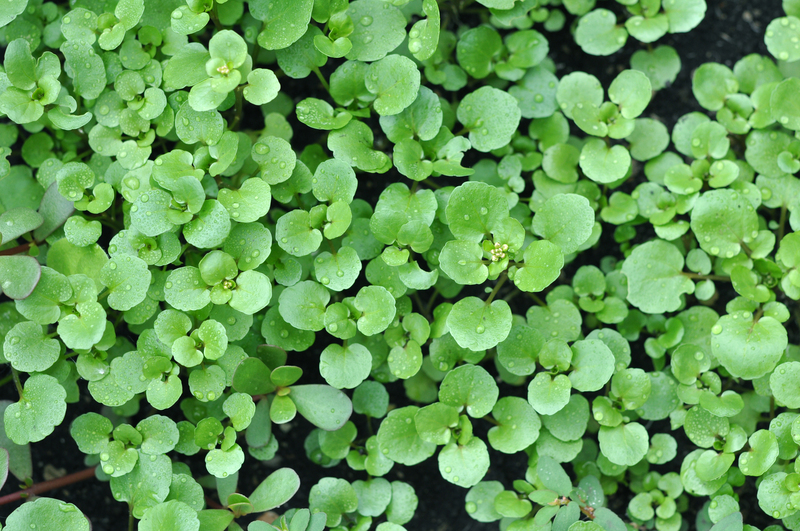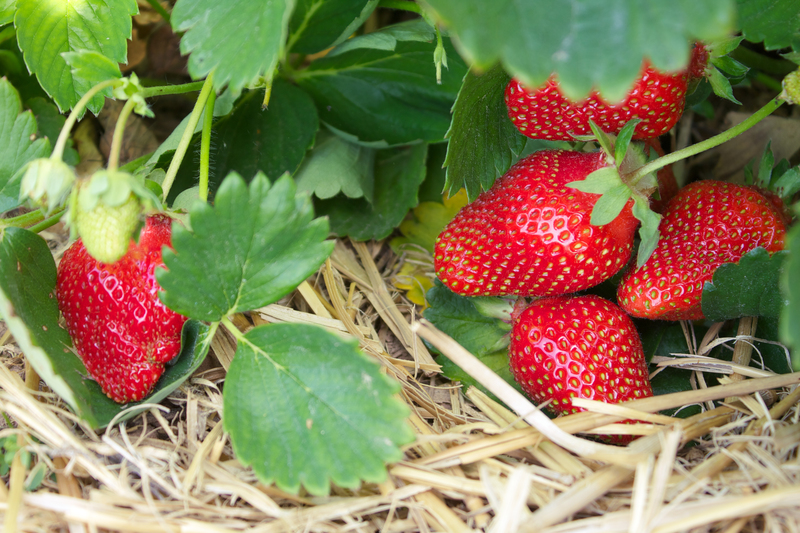Establishing a Safe and Stimulating Garden for Kids
Posted on 01/06/2025
Establishing a Safe and Stimulating Garden for Kids: A Comprehensive Guide
Children thrive in environments where they can explore, play, and learn. Creating a safe and stimulating garden for kids is an excellent way to encourage outdoor activity, spark curiosity about nature, and develop valuable skills. This guide delves into how to design a child-friendly outdoor space that prioritizes safety while fostering creativity and growth.

Why a Kid-Friendly Garden Matters
Spending time outdoors offers numerous benefits for children:
- Physical development through climbing, digging, and running
- Mental well-being thanks to natural surroundings
- Learning opportunities as they observe plants and insects
- Creativity fueled by hands-on exploration
By establishing a safe and stimulating garden for children, you create a dedicated space where kids can flourish emotionally, cognitively, and physically.
Garden Planning: Foundation for Safety and Fun
Choosing the Location
- Pick a spot that is easily visible from your home, allowing you to supervise the children while they play.
- Opt for areas with partial shade to protect kids from excessive sun exposure.
- Ensure the garden surface is level and free of hazards like large rocks or steep slopes.
Designing Spaces for Age-Appropriate Activities
Different age groups require unique features in a child-friendly garden:
- For toddlers: Raised beds, sand pits, and wide paths
- For preschoolers: Planting zones, natural play equipment
- For older kids: Vegetable patches, climbing structures, wildlife observation areas
Prioritizing Garden Safety for Kids
Making a safe garden for children should always be your first priority. Ensure the following:
- Secure fencing around the perimeter to prevent wandering and keep out unwanted animals.
- Soft ground covers (such as grass or mulch) in play areas to cushion falls.
- Covered ponds or water features (or omit them entirely for younger kids) to prevent accidents.
- Safe, non-toxic plants with no thorns, toxins, or allergenic properties.
- Tool storage should be high and locked away when not in use.
- Never use pesticides or harsh chemicals in areas where kids play or grow produce.
Plant Choices: Edible, Sensory, and Safe for Children
Non-Toxic and Edible Selections
Choosing the right plants is crucial for a safe, stimulating garden for kids:
- Edible favorites: Strawberries, blueberries, cherry tomatoes, peas, and carrots. These encourage healthy eating and curiosity.
- Tough, non-toxic ornamentals: Sunflowers, nasturtiums, calendula, and pansies. These are colorful and hard to damage.
- Avoid: Foxglove, oleander, lily of the valley, daffodils, and other common toxic plants.
Introduce an assortment of edible, aromatic, and textured plants to create a child's sensory paradise.
Encouraging Sensory Exploration
A stimulating garden for children should touch on all five senses:
- Touch: Soft lamb's ear, fuzzy mullein, crunchy grasses
- Scent: Mint, lemon balm, lavender, rosemary
- Taste: Berry bushes, herbs, sugar snap peas
- Sound: Ornamental grasses, bamboo, windchimes, rustling leaves
- Sight: Colorful blooms, interesting foliage, garden art
Label plants with fun signs to help kids learn their names, uses, and characteristics.
Essential Features of a Child-Friendly Garden
Active Play Structures
Encourage movement and discovery with these garden features:
- Natural climbing frames from logs, boulders, or sturdy branches
- Sand and mud kitchens for sensory play and imaginative cooking
- Willow tunnels or living structures for exploring and hiding
- Balance beams fashioned from smooth planks or logs
- Tree stumps as stepping stones or seating
Calm and Quiet Areas
Provide cozy spots for rest, reading, or observing wildlife:
- Shaded benches under trees or pergolas
- Mini teepees or tents for quiet play
- Butterfly gardens or bird-watching zones
- Hammocks or swings for gentle relaxation
Creative Corners
Fuel children's imagination and problem-solving skills:
- Art stations with washable paint, chalkboards, and natural materials
- Fairy or miniature gardens for storytelling and small-world play
- Building materials like wooden blocks, sticks, and rocks
Grow Your Own: Edible Gardens for Kids
Give children a patch of earth or raised bed to plant their own crops. Involving kids in planting, watering, and harvesting boosts responsibility. Try:
- Quick-growing vegetables: radishes, lettuce, beans
- Easy fruits: strawberries, raspberries
- Herb spirals or pots: basil, chives, mint
Safety Checklist for a Child's Garden
Before letting children loose, walk through this checklist to ensure a safe play and learning environment:
- Check for hazardous plants, chemicals, or tools left lying around.
- Inspect fences and gates for gaps or sharp edges.
- Make sure water features are shallow or securely covered.
- Test soil and mulch for safe, non-toxic content.
- Install soft landings with bark, sand, or rubber mulch under play areas.
- Remove trip hazards such as roots, uneven paving, or loose stones.
- Keep beehives or compost bins out of reach.
- Teach children which plants and berries are safe, and which to avoid.
Engaging Kids in Garden Activities
Fun and Educational Projects
Establishing a stimulating garden for kids means involving them in ongoing activities:
- Planting seeds: Use fast-sprouting options for quick rewards.
- Measuring plant growth: Make homemade rulers and track progress.
- Nature scavenger hunts: List sights, smells, and textures to find.
- Building bug hotels: Encourage insect observation and care for pollinators.
- Composting: Teach eco-friendly habits by recycling food scraps.
Encouraging Wildlife
A truly stimulating children's garden is rich in biodiversity. Attract helpful creatures with:
- Bird feeders and baths
- Bee and ladybug houses
- Piles of sticks and stones for beetles and frogs
- Pesticide-free planting for safe insect food sources
Let kids log their wildlife sightings in a garden journal to foster observation skills.
Maintaining a Safe and Stimulating Outdoor Space
Ongoing Supervision and Adaptation
A child-friendly garden requires regular upkeep:
- Monitor for new hazards--fallen branches, wasp nests, or broken equipment.
- Rotate play features and activities to keep children engaged.
- Replace or repair worn-out play equipment promptly.
- Clean up debris and regularly mow lawns or trim paths for safety.
Teaching Safety and Responsibility
Involving kids in garden upkeep encourages good habits and self-reliance:
- Assign simple chores: watering plants, tidying up toys, or weeding.
- Discuss why certain actions (such as pulling plants or entering tool sheds) are off-limits.
- Model good behavior by storing tools and cleaning hands after gardening.
Incorporating Sustainable and Eco-Friendly Practices
Building a safe and stimulating garden for children can also nurture respect for the environment:
- Compost organic waste to reduce landfill use and teach natural cycles.
- Collect rainwater in barrels for watering plants.
- Opt for native plants that support local wildlife and require less maintenance.
- Use natural mulches and organic pest control methods.

Inspiration: Themes and Styles for Kids' Gardens
Here are some engaging ideas to make your child-safe and exciting garden truly memorable:
- Enchanted forest: Use winding paths, fairy lights, and hidden treasures.
- Edible wonderland: Focus on fruits and veggies with playful markers.
- Water play paradise: Install splash pads or shallow streams with strict supervision.
- Adventure trail: Include balancing logs, stepping stones, and obstacle courses.
- Sensory garden: Group plants by scent, touch, and sight, and include sound-making features.
Conclusion: Growing Safe, Happy, and Curious Children
Establishing a safe and stimulating garden for kids requires thoughtful design, routine maintenance, and a focus on active engagement. By incorporating age-appropriate play areas, non-toxic plants, and environmental stewardship, you give children the gift of adventure, discovery, and well-being. Whether you have a sprawling backyard or a cozy courtyard, the most important ingredients are creativity, supervision, and a willingness to adapt your outdoor space as your children grow. Start today and watch both your garden and your child's imagination blossom!
Additional Resources for Safe, Stimulating Kids' Gardens
- List of non-toxic plants for children's gardens - consult your local nursery or botanical garden for the best regional picks.
- Garden design templates and inspiration - explore child-friendly layouts and DIY projects.
- Wildlife-friendly gardening tips - attract pollinators and birds safely.
- Safety checklists from national gardening and child safety organizations.
By integrating these strategies, you're not just building an outdoor play area--you're cultivating a lifelong love of nature in your youngest family members.

